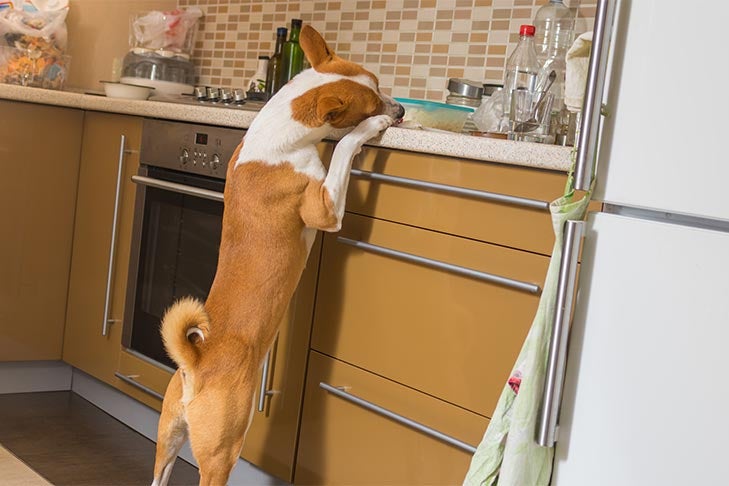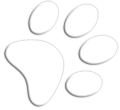
Dogs’ inquisitive nature can sometimes get them into serious trouble around your home. They love to sniff, explore, chew, and eat or lick things that seem tasty or smell pleasant — including items that might be toxic to them. That’s why it’s best to keep all potentially toxic products, especially ones you wouldn’t want a baby or toddler getting into, away from your dog. Below are some common household hazards and suggestions on how to keep your pup from messing with them.
Cleaning Products
Cleaning products can be used safely around your dog, but be sure to use them carefully, especially if they contain ammonia or bleach. Ingesting bleach can cause stomach upset, vomiting, diarrhea, and severe burns to your pup.
Be aware of proper ventilation, make sure all caps and lids are on tight, and keep pets away from areas that were recently cleaned until they’ve dried. Store cleaning products (and rags or sponges soaked with cleaning fluids, liquid and tablet detergents, and polishes) out of reach by putting them in places such as a dog-proof cabinet or closet.

Food and Garbage
In addition to foods that are toxic to dogs, access to an indoor or outdoor garbage or recycling bin can be hazardous — especially when it contains moldy or rotten food or animal bones. You’ll especially want to keep your dog away from alcohol, broken glass, raw meat, egg shells, straws, plastic cutlery, peels and rinds, coffee filters and grinds, and any products containing xylitol.

Turn your garbage bin lid inside out or upside down over the can to keep your dog from getting into it, or block it with a gate. If your canine is a particularly curious explorer, keep your garbage bins out of reach altogether, such as behind a closed door, or try a dog-proof garbage can.
Medications
Prescription and nonprescription medications can be harmful to your dog if ingested, making them very sick. Keep bottles of pain relievers, cough, flu, and cold medicines, sleeping and diet pills, liquid medicines, and vitamins and supplements tightly capped. Make sure all containers and boxes are out of reach.
Tools
Chewing or stepping on household tools can cause choking, broken teeth, injury, or lacerations. Tools, especially small parts, are best left in a secure toolbox in the garage or shed. Items to keep out of your dog’s reach include hammers, nails, staples, screws, bolts, wires and cords, tacks, paint, poisons and pesticides, batteries, razors, and scrapers.
Laundry
Yes, even laundry can be hazardous to your dog — chewing or ingesting items such as socks, underwear, shoelaces, and hosiery can cause choking and/or internal blockages. Keep dirty laundry in hampers and put clean laundry away promptly after washing it.
Curious dogs might also try to consume dryer sheets, detergents in liquid, tablet, or powder form, bleach, or small accessories like scarves and buttons. So keep these items put away and out of reach.
Miscellaneous
There are a number of other household items that can be hazardous to dogs. They include small children’s toys (such as doll shoes or beads), scented candles, lighters or matches, cosmetics, hair dyes, and even certain types of plants.
Additional Safety Tips
This may seem like a lot of things to worry about, but preventing your dog from getting into any of these household hazards could save their life. If you haven’t already, teach them the “leave it!” command when you notice them going off to investigate something dangerous. For times when you aren’t at home, be sure all items are securely out of reach before you leave the house. Crate your dog if necessary, especially if they tend to counter-surf or open doors.
If your dog has consumed one of these products or become injured by any of them, seek veterinary attention right away. You can also call the Pet Poison Helpline at 855-764-7661.


